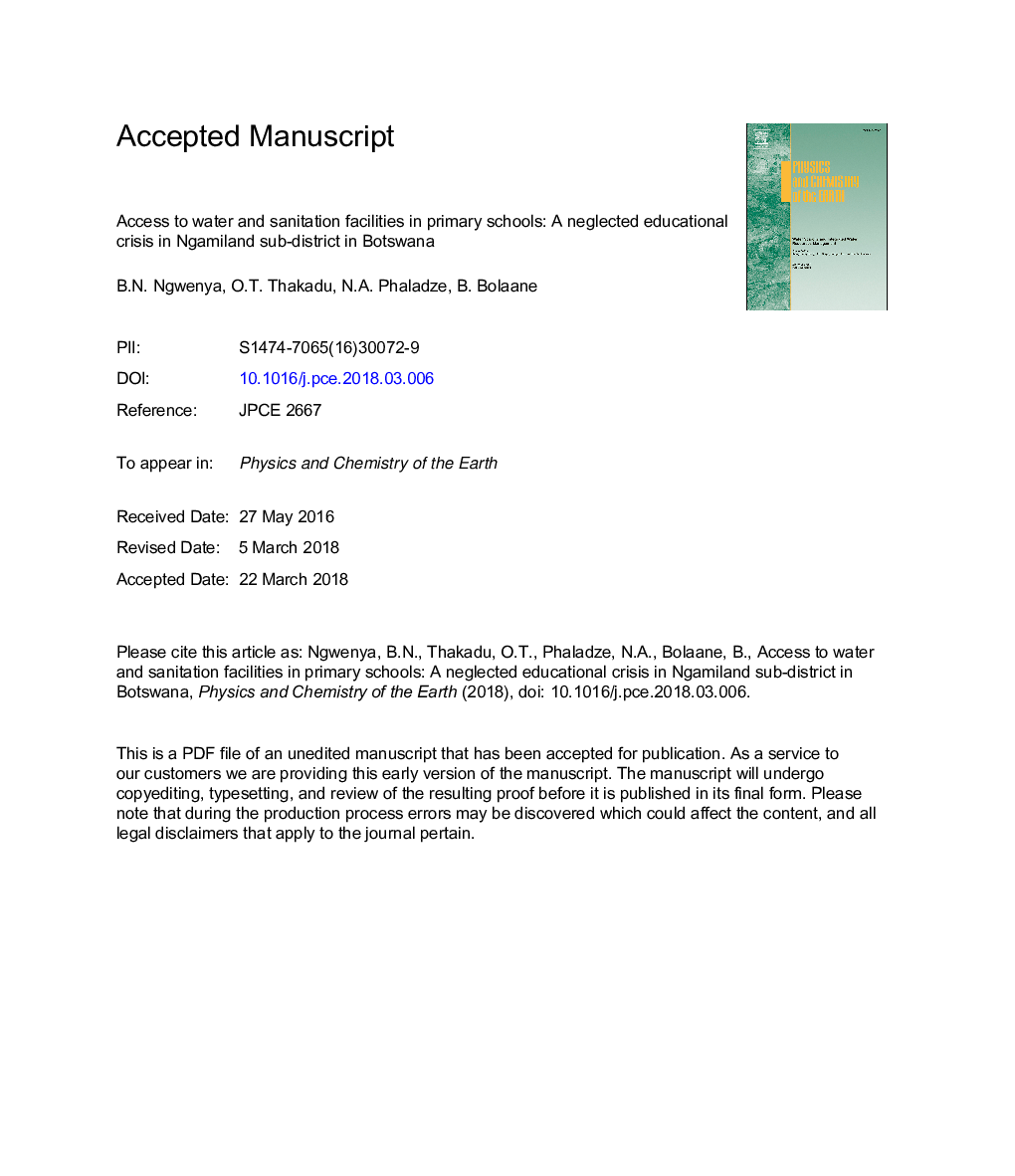| Article ID | Journal | Published Year | Pages | File Type |
|---|---|---|---|---|
| 8912364 | Physics and Chemistry of the Earth, Parts A/B/C | 2018 | 23 Pages |
Abstract
In developing countries, the sanitation and hygiene provision often receives limited resources compared to the water supply. However, water supply benefits tend to diminish if improved sanitation and hygiene are neglected. This paper presents findings of a situational analysis of water supply, sanitation and hygiene infrastructure and their utilization in three primary schools in north-western Botswana. The overall objective of the paper is to determine access and functionality of water supply, sanitation and hygiene infrastructure in three primary schools. The specific objectives are: a) Learners' perspective of their water and sanitation facilities and b) gendered utilization of sanitation and hygiene facilities. Data were collected through a face-to-face administered social survey tool to 286 learners selected through proportionate stratified random sampling from three purposively selected villages in the middle and lower Okavango Delta. Findings indicate that standpipes provide 96% of potable water supply. However, the majority (65% of leaners) indicated that they 'sometimes' experienced water shortage due to dry/nonfunctioning taps/pumps and leaks/wastage. Overall, schools have relatively sufficient sanitation facilities consisting of both water borne toilets and VIP latrines. The major sanitation gap identified was that 80% flush toilets hardly work, while 77% of VIP toilets were in disrepair. Furthermore, poor water supply compromised hand washing with 65.7% learners “always” washing their hands if school standpipes had water, while the majority did not wash hands if standpipes were dry. The study concluded that availability of sanitation infrastructure does not necessarily translate into utilization in the study area due to multiple problems, such as lack of personal hygiene supplies (regular toilet paper and hand washing detergents), privacy issues and recurring water problems. The chronicity of inadequate water, sanitation and hygiene infrastructure in primary schools is critical and there is urgent need to address these challenges in order to create a conducive learning environment in primary schools in the district.
Related Topics
Physical Sciences and Engineering
Earth and Planetary Sciences
Geochemistry and Petrology
Authors
B.N. Ngwenya, O.T. Thakadu, N.A. Phaladze, B. Bolaane,
